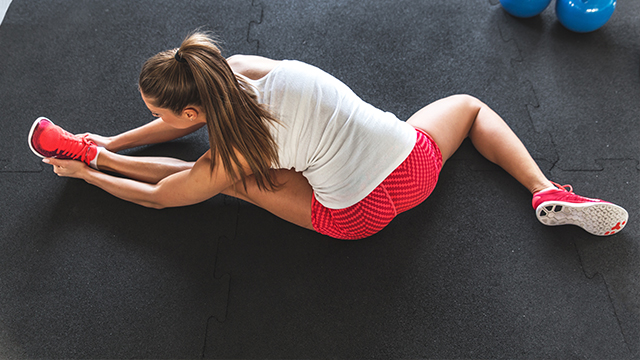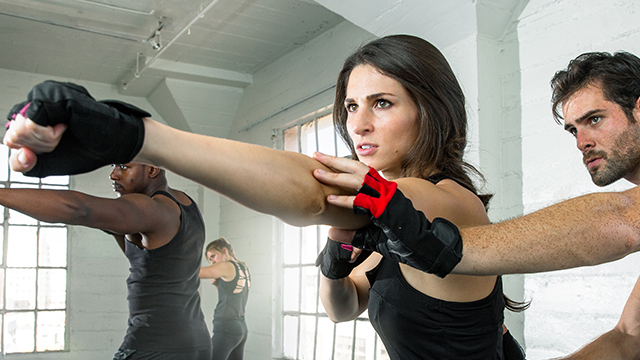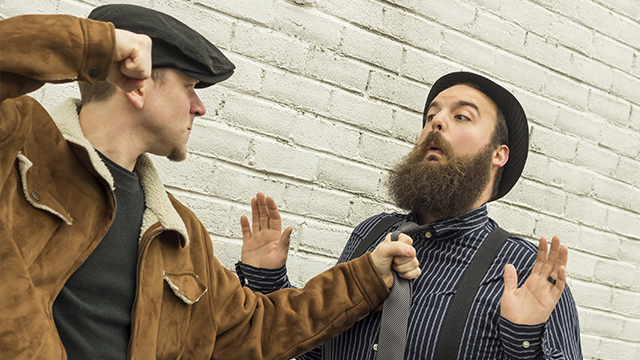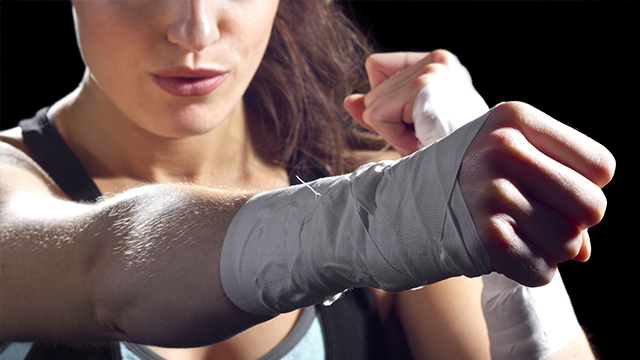10 Basic Rules of Stage Combat (That Keep Everyone Safe)
Written by Ashleigh Gardner
July 9, 2017
It’s no secret that stage combat is really, really cool. Somebody takes a punch onstage — but no one gets hurt. Well, ideally no one gets hurt. It’s essential that precautions are taken during stage combat rehearsals and performances so that actors participating in the fight and audience members stay safe.
1. Warm up.

If you’re not looking for a pulled muscle, you’ll want to warm up before you even think about picking up a sword or throwing a punch. If you’re looking for a good set of stretches, check out this page from UC Riverside. Warming up prepares your body for the types of movement you’ll be doing in a stage combat rehearsal or performance.
2. Wear closed toed sneakers or boots and comfortable clothes.

Even if you’ll be fighting in a dress, wear pants first so you can get a good grasp on your movements, then add the rehearsal skirt in later. You don’t want to catch your weapon or your leg on your skirts and have an accident.
3. Always listen to your fight choreographer.

You’ve got a fight choreographer for a reason, right? Listen to everything they say, and keep a notebook with you and a pencil so you can track your choreography and blocking. Additionally, pay attention to the way they direct an attack and defense. If you don’t take the note because you weren’t paying attention, you or your partner may get injured. Finally, never use more force or speed than is directed.
4. Don’t fool around.

Fight choreography may be fun, but it’s serious business because it’s simulated violence. A punch thrown during a break without the supervision of your director may end up in a bruised face, and a lunge with a sword may cause an actor to be hospitalized.
5. Make eye contact with your partner(s).

It’s essential to be in sync with your combat partner(s) before you begin a fight. If you start early without making sure you’ve made eye contact and agreed, silently, that you’re ready to go, your partner(s) may be caught off guard, and you and they may become injured.
6. Never improvise your fight choreography.

Fight choreography may look like in-the-moment violence, but it’s not — or it shouldn’t be. Every moment you see on stage and screen has been orchestrated by the fight director for a specific reason, and if one actor deviates from the choreography, and their partner doesn’t know, their partner could become seriously injured.
7. Always go at quarter speed unless your fight choreographer allows you to speed things up to ¾ speed.

It’s normal for actors to go at ¼ speed when they first begin fight choreography, but sometimes when an actor finds themselves in the heat of the moment while rehearsing, they may speed up the series of attacks because they feel confident. Don’t do this. PLEASE. Stay safe and remain at ¼ speed until your director instructs you to increase to ½ or ¾ speed. At ¼,½, or ¾ speed, the reaction of the actor taking the hit is what sells the attack.
8. Be aware of your surroundings.

Just like it’s important to do when driving, make yourself aware of your surroundings when you’re about to enter a combat situation. Is there a table to your left? Stairs behind you? An actor wearing a dress with a train behind your fight partner? Take note!
9. Heart beating fast? Take a break. And breathe.

Sometimes when actors participate in fight choreography, they hold their breath because they’re so focused on the moves. Additionally, an actor’s adrenaline may be pumping so hard that their heart starts beating rapidly, causing them to lose focus. If this happens to you in a rehearsal, take a break, take a breath, drink some water, and chill out for a few minutes. If you train yourself during rehearsals to breathe and go slow, the chances of the above happening during a performance decrease significantly.
10. Always do a fight call.

I’m not kidding. Do it. DO IT. Fight calls give actors a refresh of what should be going on in the fight before the fight actually occurs in the play. If there’s a problem with the fight before it’s presented to an audience, the fight choreographer can change it to make it safer during the fight call. Do a fight call. Do a fight call. DO A FIGHT CALL.
Remember, safety isn’t just a necessity, it’s a state of mind. Fight choreography is fun and exhilarating, right? So always practice fight choreography safely so that you can perform it again and again and again for every audience that comes to see the hard work you’ve put into it.
Need some advice? We’ve got you covered.
- Don’t Be a Diva: Common Pitfalls and How to Avoid Them
- 9 Articles of Clothing Every Thespian Should Keep In Their Wardrobe
- What Makes an Actor Website WOW?
- “Is my attitude not getting me roles?” And Other Essential Questions for Actors
- 6 Steps to Memorizing Shakespeare
- 10 Tricks to Staying Healthy All Season Long
- What Does It Take to Break Into Voiceovers?
- 5 Tips for Nailing Your College Music Theatre Audition
- 10 Tips on Owning the Room at Competition
- How to Balance Theatre and Coursework
- The 10 Secrets of Great Understudying
- 10 Items Every Actor Should Carry in Their Rehearsal Bag
- 10 Items Every Dancer Should Keep in Their Rehearsal Bag
